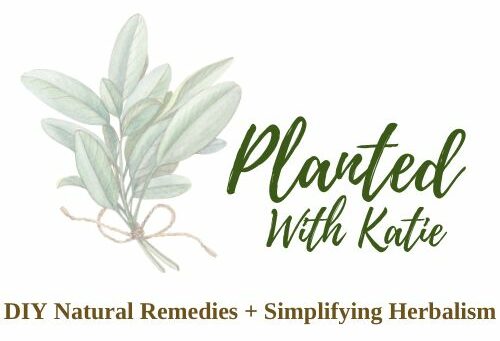Top 5 Natural Remedies and Herbs for Tennis Elbow
Today, let's chat about something that might be giving you a bit of trouble – tennis elbow, or as it's officially known, lateral epicondylitis. Whether you're a tennis player dealing with the aftermath of a match or just someone whose daily activities are causing some elbow discomfort, I've got your back, or should I say, your outer elbow.
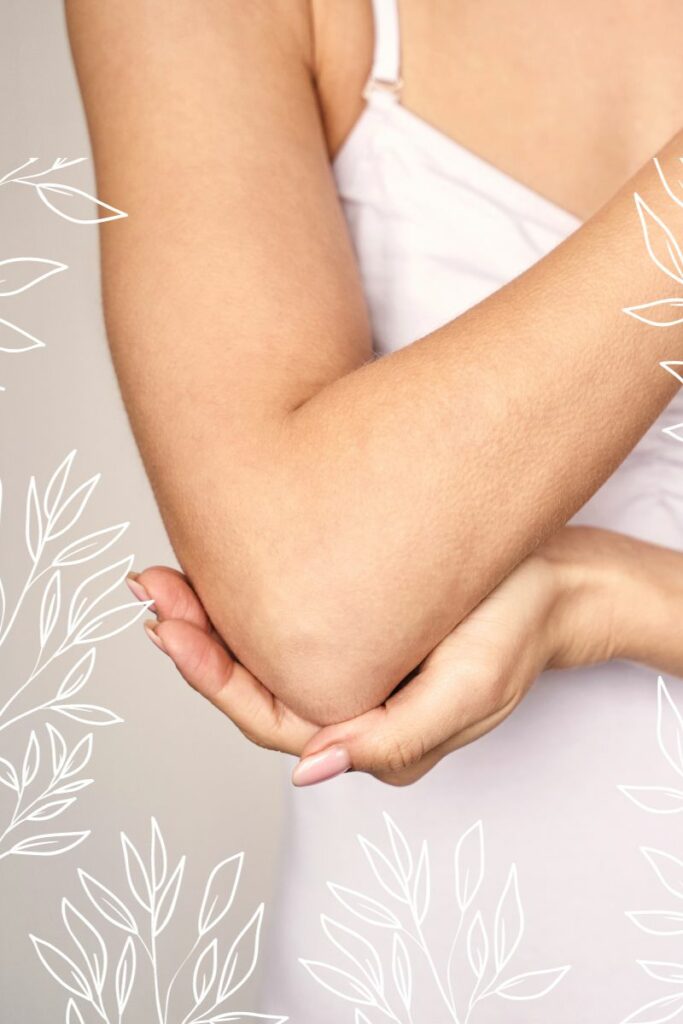
Disclaimer: This is not medical advice. Information and statements shown here are for educational and informational purposes only and are not to replace the advice of your healthcare professional.
This post may include affiliate links. Please refer to our disclaimer for full disclosure.
Tennis elbow is no joke. It's that unwelcome guest that shows up after a game of tennis or those repetitive wrist motions during your daily routines. But fear not, we're here to talk about the good stuff – herbs that can be your allies in soothing the discomfort in and around the outer part of your elbow.
I'm not just about the temporary relief – I'm talking about a treatment plan that goes beyond the quick fixes. From essential oils to traditional Chinese medicine and home remedies you can find in your kitchen, we're exploring the natural side of things. No need for steroid injections or dealing with side effects – just some herbal goodness.
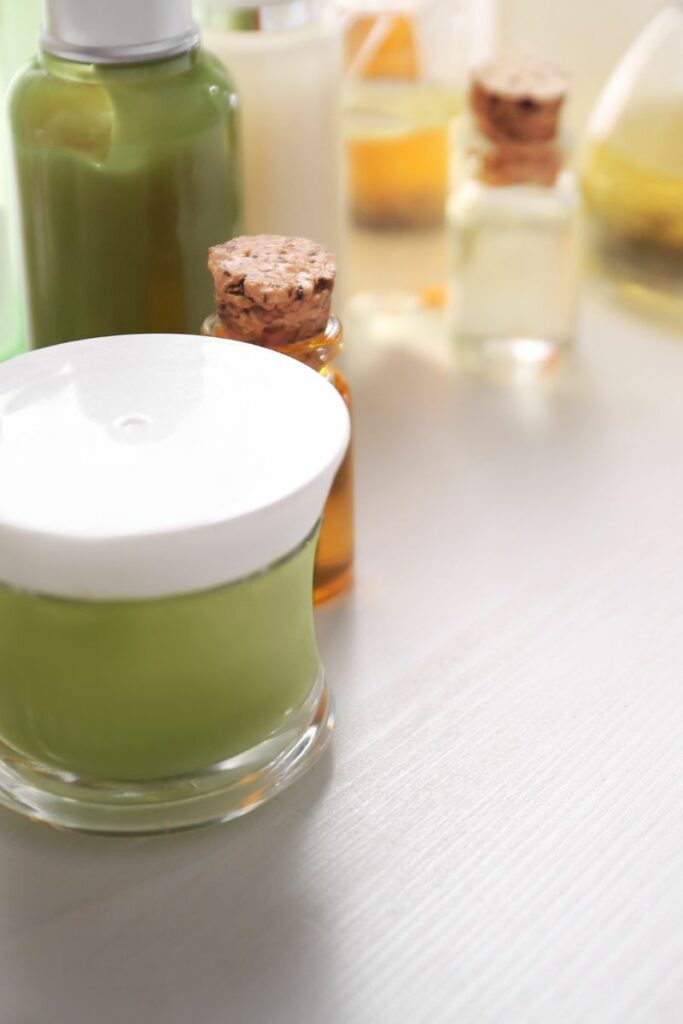
Whether you're experiencing severe pain or just looking for daily practices that make a difference, I've got you covered. I'll unravel the causes of tennis elbow, chat about symptoms, and explore how herbs can play a role.
Understanding Tennis Elbow
So, what's causing that ache in your elbow? Well, it often comes down to repetitive movements, like those swings on the tennis court. This constant action can lead to small tears in the extensor carpi radialis brevis, the muscles on the outer part of your forearm.
It's like a mini-protest from your body, saying, "Hey, ease up a bit!" Golfer’s elbow, which is similar but affects the inner side of the elbow, can also make its presence known.
This isn't only reserved for tennis players and athletes though, you can get tennis elbow from everyday activities as well.
Identifying Symptoms and Stages of Tennis Elbow
How do you know if it's tennis elbow? Keep an eye out for joint pain, especially when you're using your forearm. The lateral epicondyle, that bony bump on the outer side of the elbow, might be giving you some signals. If you're experiencing symptoms like pain, swelling, or difficulty moving your elbow, you might be in the tennis elbow club.
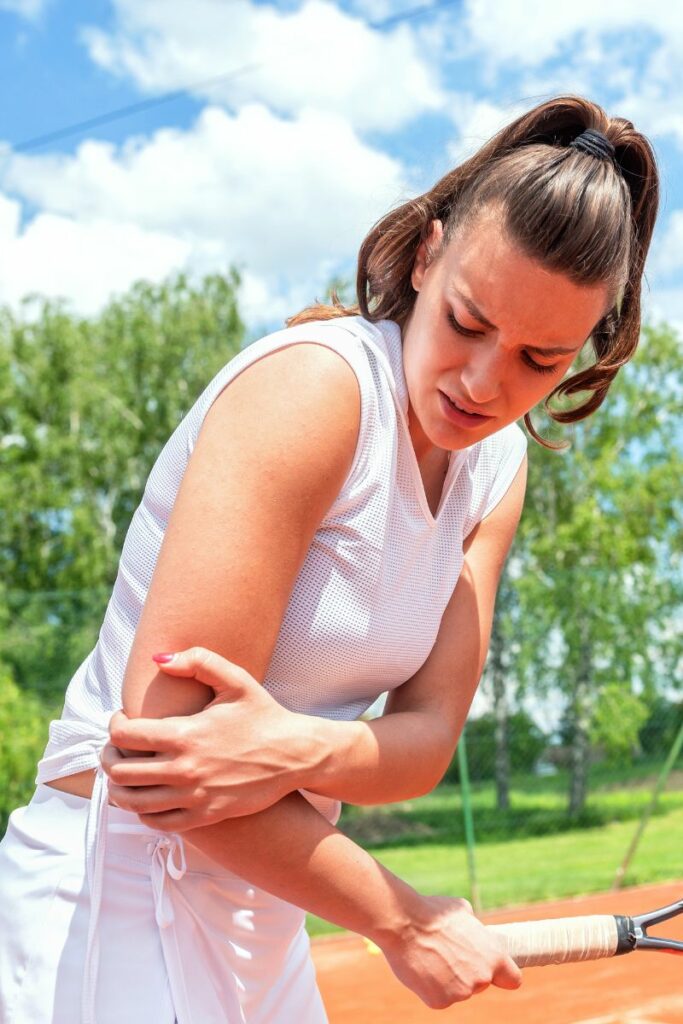
In the early stages, it might feel like a nagging discomfort. But in severe cases, it can escalate to chronic pain, affecting your daily routine. That's where we don't want to be, right? So, let's explore how herbal remedies and some simple lifestyle changes can be your go-to team for relief.
Top 5 Herbs for Tennis Elbow Relief
When finding the best natural remedies for tennis elbow injury, these 5 herbs are most often used and can be very effective:
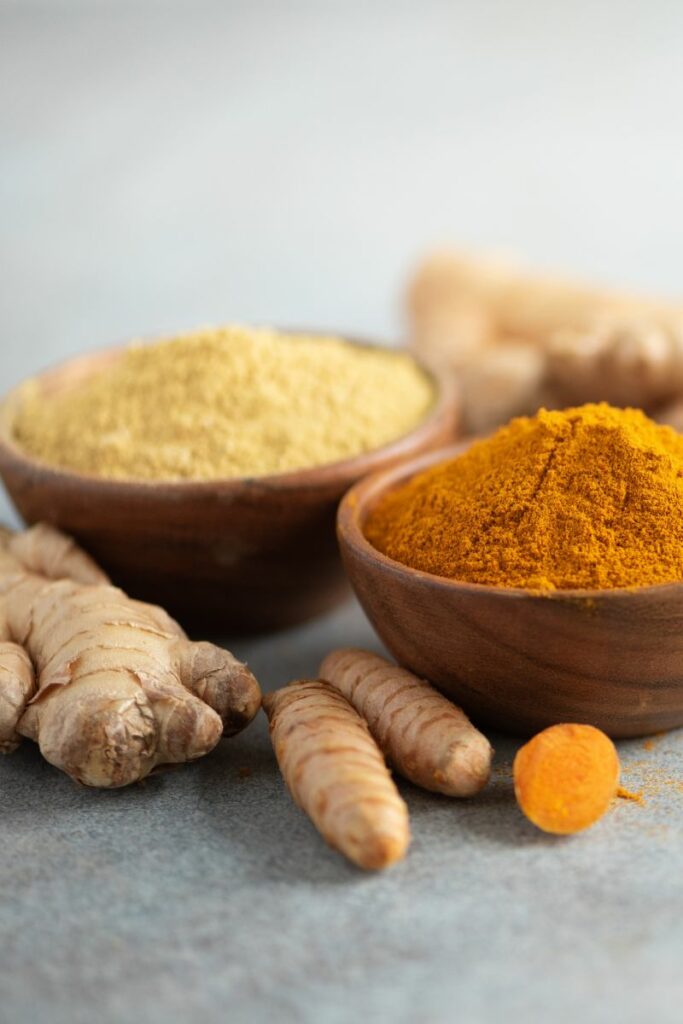
1. Turmeric
This golden gem is anti-inflammatory, perfect for calming down that elbow inflammation.
- Turmeric, derived from the Curcuma longa plant, is renowned for its anti-inflammatory properties attributed to curcumin1. It serves as an effective modulator of inflammation 2, potentially alleviating the discomfort associated with tennis elbow by reducing inflammatory responses. Many have reported instant pain relief once they implement turmeric into their lifestyle. It's also great for rheumatoid arthritis along with most other painful condition.
2. Arnica
Considered nature's answer to bruises and aches, Arnica can help ease the pain associated with tennis elbow.
- Arnica montana, a perennial herb, has analgesic properties and is commonly employed to mitigate pain and bruising 3. Its application in tennis elbow relief is rooted in its potential to alleviate pain symptoms, offering a natural alternative for those seeking relief from associated discomfort.
3. Ginger
Known for its anti-inflammatory properties, ginger can be your ally in reducing pain and promoting healing.
- Zingiber officinale, commonly known as ginger, contains bioactive compounds like gingerol 4. With established anti-inflammatory properties, ginger may contribute to reducing pain and promoting healing in cases of tennis elbow 5, making it a noteworthy herb in natural therapeutic approaches.
4. Comfrey
This herb is like a superhero for tissue repair. It can aid in speeding up the healing process for those strained elbow tissues.
- Symphytum officinale, or comfrey, is recognized for its potential role in tissue repair 6. Through the presence of allantoin, comfrey may aid in accelerating the healing process of strained elbow tissues, presenting itself as a botanical option for those seeking natural support 7.
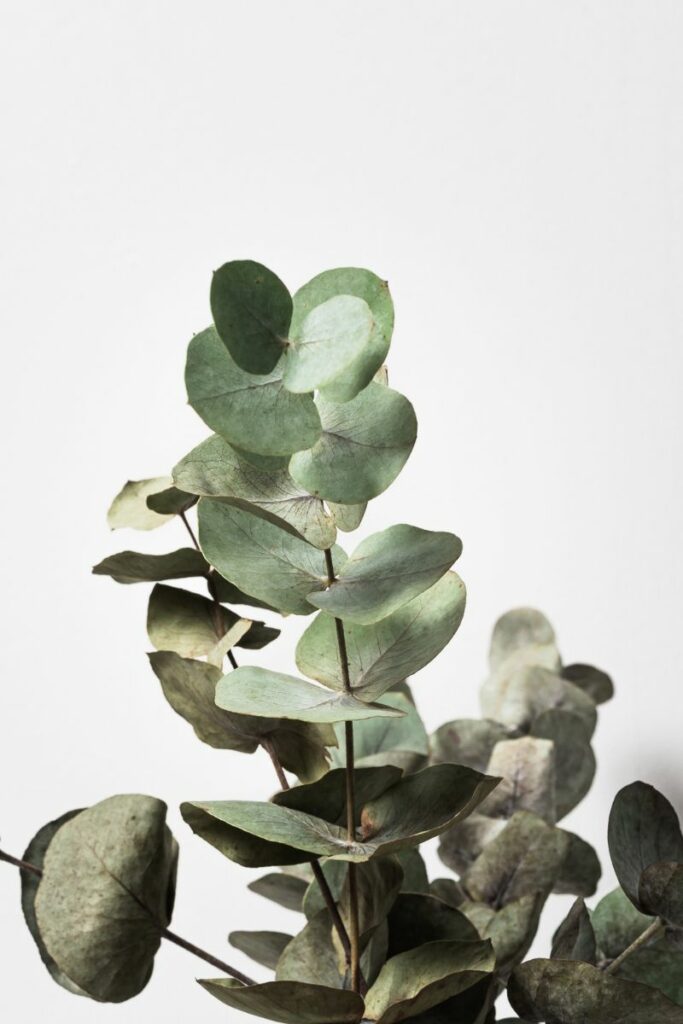
5. Eucalyptus
With its cooling sensation, eucalyptus can bring relief to the soreness and discomfort in your elbow.
- Eucalyptus globulus, known for its cooling properties, offers potential relief for the soreness and discomfort associated with tennis elbow. Its application can be likened to a cooling agent, providing a sensation of comfort and contributing to the overall therapeutic experience 8.
Special Mention of Cayenne Pepper for Tennis Elbow
I'd like to add cayenne pepper as a complementary herbal protocol for tennis elbow symptoms. It bring blood flow to specific points, assisting with improved circulation and healing.
Crafting Herbal Solutions for Tennis Elbow: Practical Applications
Let's explore how each of the key herbs—turmeric, arnica, ginger, comfrey, and eucalyptus—can be practically applied for tangible benefits.
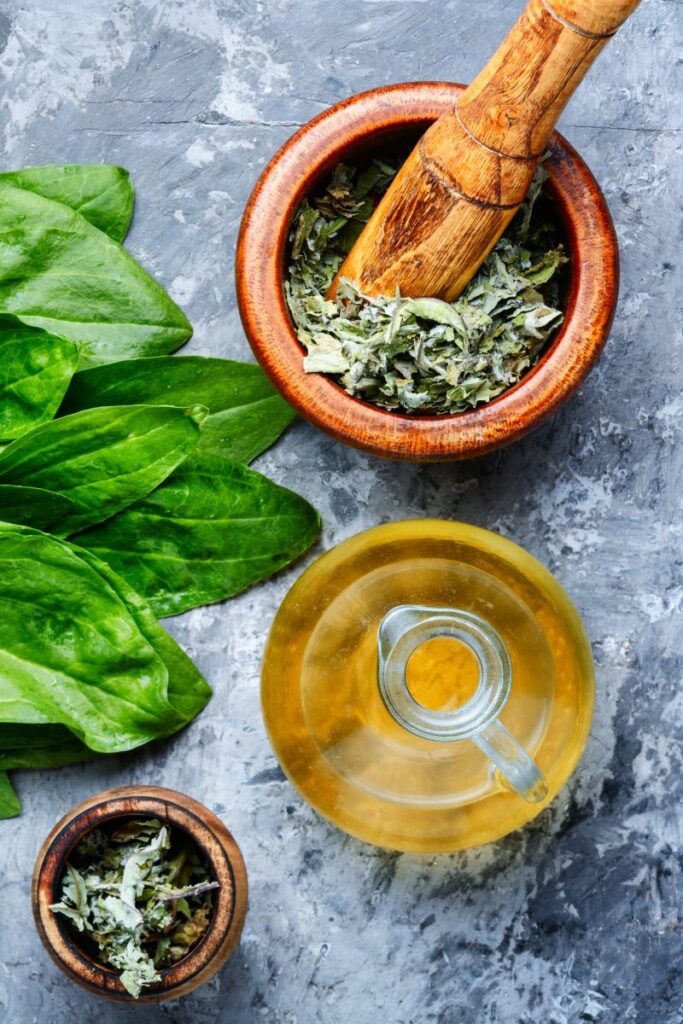
- Turmeric Paste:
- Create a simple paste by combining turmeric powder with water. Apply this paste to the affected area for its anti-inflammatory effects. Allow it to rest for a specified duration before rinsing.
- Arnica Oil Infusion:
- Utilize arnica-infused oil, readily available in health stores, and gently massage it into the affected elbow area. This application aims to harness arnica's analgesic properties for localized relief.
- Ginger Compress:
- Comfrey Poultice:
- Craft a comfrey poultice by blending fresh comfrey leaves into a paste. Apply this directly to the affected area, allowing the herb's tissue repair properties to potentially expedite the healing process.
- Eucalyptus Oil Massage:
- Mix a few drops of eucalyptus oil with a carrier oil and massage it into the sore elbow. The cooling sensation of eucalyptus aims to provide relief and complement the overall herbal intervention.
As with any herbal application, consistency and moderation are key. It is advisable to conduct a patch test before widespread use and to seek professional advice, especially if pre-existing conditions or medications are in consideration.
These practical applications harness the potential benefits of each herb, offering a holistic approach to managing the discomfort associated with tennis elbow. Integration into daily self-care routines may contribute to a comprehensive strategy for relief.
DIY Herbal Poultices & Salves For Targeted Tennis Elbow Relief
For a little more longterm relief, I'd suggest crafting your own salves or a poultice mix to have on hand.
DIY Herbal Poultice for Tennis Elbow Relief
Ingredients:
- 1 tablespoon dried comfrey leaves
- 1 tablespoon dried calendula petals
- 1 tablespoon ground turmeric
- 1 tablespoon fresh ginger, grated
- 2 tablespoons bentonite clay
- Water (as needed to form a paste)
Instructions:
- Combine dried comfrey leaves, calendula petals, ground turmeric, and grated fresh ginger in a bowl.
- Add bentonite clay to the herbal mixture and mix well.
- Gradually add water, stirring, until a thick paste is formed.
- Apply the poultice directly to the affected area.
- Cover with a clean cloth and leave on for 15-20 minutes.
- Rinse off with warm water.
DIY Herbal Salve for Tennis Elbow Relief
Ingredients:
- 1/4 cup arnica-infused oil (arnica infused into carrier oil)
- 1/4 cup turmeric-infused oil (turmeric infused into a carrier oil)
- 3-4 tablespoons beeswax pellets
- 1-2 tablespoon coconut oil
- 1-2 tablespoon shea butter
- 10-15 drops eucalyptus essential oil
- 10-15 drops lavender essential oil
Instructions:
- In a double boiler, melt arnica-infused oil, beeswax pellets, coconut oil, and shea butter together.
- Once melted, remove from heat and let it cool slightly.
- Add eucalyptus and lavender essential oils, stirring well.
- Pour the mixture into a clean jar or tin.
- Allow it to cool and solidify before sealing.
Usage:
- Apply a small amount of the salve to the affected area and massage gently.
These DIY herbal poultices and salves incorporate the potential benefits of comfrey, calendula, arnica, turmeric, and eucalyptus for targeted relief.
Herbal Teas for Inflammation Support
When addressing the challenges of tennis elbow, incorporating herbal teas into your routine can provide internal support, complementing external applications. Let's explore a selection of herbal teas that align with the key players—turmeric, arnica, ginger, comfrey, and eucalyptus—for a holistic approach to relief.
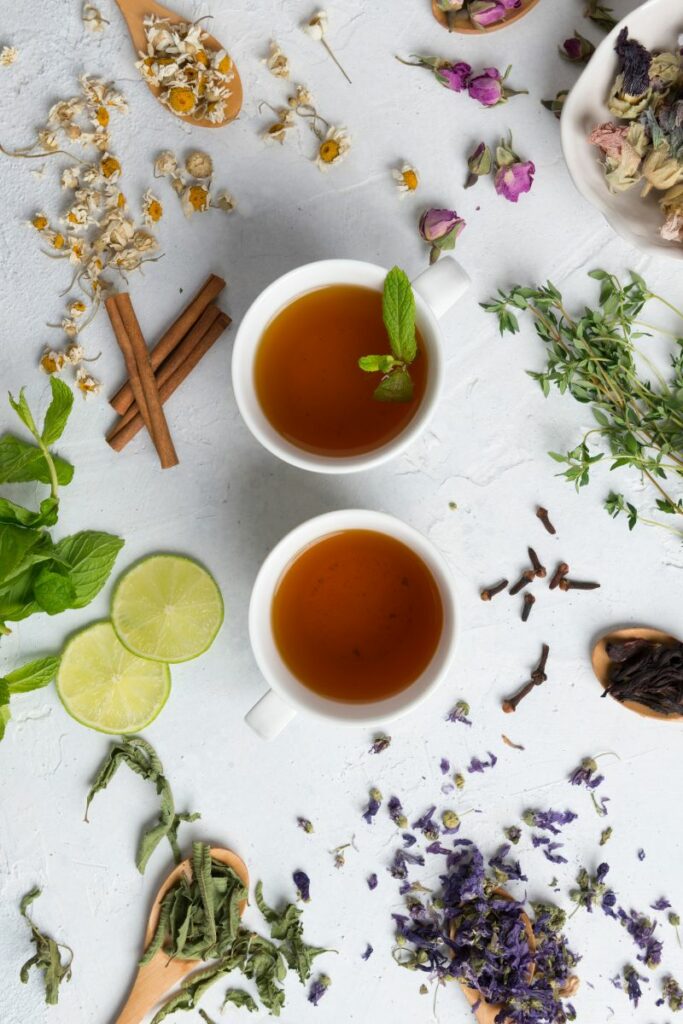
- Turmeric Tea:
- Brew a cup of turmeric tea using turmeric powder or fresh turmeric slices. This warm infusion can deliver the anti-inflammatory benefits of turmeric internally, potentially aiding in reducing inflammation systemically.
- Arnica Tea Blend:
- While pure arnica tea is not commonly consumed due to its potency, blending herbs like chamomile or calendula with a touch of arnica-infused oil may create a soothing herbal tea. This blend can offer comfort and relaxation.
- Ginger Infusion:
- Prepare a ginger infusion by steeping fresh ginger slices in hot water. This invigorating tea can be a delightful way to incorporate ginger's anti-inflammatory properties internally, potentially contributing to overall joint well-being.
- Comfrey Leaf Tea:
- Craft a comfrey leaf tea by steeping dried comfrey leaves. This herbal infusion is believed to promote tissue repair and may provide internal support for the healing process associated with tennis elbow discomfort.
- Eucalyptus Herbal Tea:
- Infuse eucalyptus leaves into hot water to create a fragrant herbal tea. While less common, eucalyptus tea may offer a subtle internal complement to the external use of eucalyptus for its cooling properties.
Tea Blends To Calm Tennis Elbow Inflammation
Herbal Blend #1: Soothing Spice Harmony
Ingredients:
- 1 teaspoon turmeric powder
- 1 teaspoon ginger slices
- 1 teaspoon dried eucalyptus leaves
Instructions:
- Combine the turmeric powder, ginger slices, and dried eucalyptus leaves in a teapot or tea infuser.
- Pour hot water over the herbal blend and let it steep for 5-7 minutes.
- Strain the tea and enjoy a cup of this soothing blend. The warmth of turmeric and ginger, combined with the refreshing notes of eucalyptus, creates a harmonious and comforting infusion.
Herbal Blend #2: Comforting Calendula Fusion
Ingredients:
- 1 teaspoon arnica-infused oil (blended with carrier oil)
- 1 teaspoon dried comfrey leaves
- 1 teaspoon calendula petals
Instructions:
- Mix the arnica-infused oil with a carrier oil, creating a soothing blend.
- Steep dried comfrey leaves and calendula petals in hot water for 5-7 minutes.
- Combine the herbal infusion with the arnica-infused oil blend.
- Strain and enjoy this comforting blend that integrates the potential benefits of arnica, comfrey, and calendula for internal support and a delicate taste.
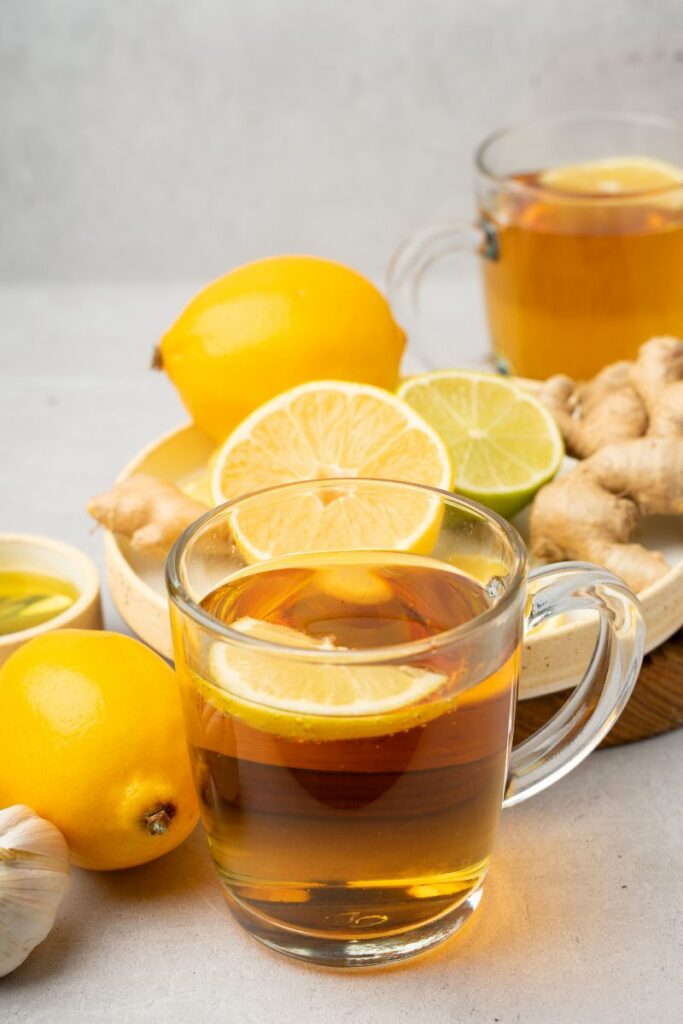
Herbal Blend #3: Ginger-Lemon Revitalizer
Ingredients:
- 1 teaspoon ginger slices
- 1 teaspoon dried eucalyptus leaves
- Fresh lemon slices
Instructions:
- Place ginger slices and dried eucalyptus leaves in a teapot or tea infuser.
- Add fresh lemon slices for a burst of citrus flavor.
- Pour hot water over the herbal blend and let it steep for 5-7 minutes.
- Strain the tea and experience the revitalizing combination of ginger, eucalyptus, and lemon. This blend not only offers potential internal support but also delights the taste buds with its zesty notes.
Sip, savor, and let the herbal infusion work its subtle magic from the inside out, supporting your journey towards tennis elbow relief. Enjoy the journey of discovering the flavors and potential wellness benefits of these herbal infusions!
Prevention Strategies: Herbal Support for Proactive Joint Health
- Turmeric and Ginger Infused Meals:
- Regularly include turmeric and ginger in your meals. These herbs have anti-inflammatory properties that may contribute to joint health. Consider adding them to soups, stews, or stir-fries.
- Herbal Smoothies with Anti-Inflammatory Ingredients:
- Create herbal smoothies incorporating ingredients like turmeric, ginger, and leafy greens. This not only supports joint health but also provides a refreshing and nutritious beverage.
- Daily Herbal Teas for Internal Support:
- Establish a daily routine of herbal teas. Teas with anti-inflammatory herbs such as turmeric, ginger, and eucalyptus can provide ongoing internal support for your joints.
- Herbal Supplements for Nutritional Boost:
- Consider herbal supplements like turmeric or ginger capsules for a concentrated dose of joint-supporting compounds. Consult with a healthcare professional to determine appropriate dosages.
- Joint-Healthy Herbal Snacks:
- Snack on nuts and seeds with anti-inflammatory properties, such as flaxseeds or walnuts. These can be easily incorporated into your daily routine for proactive joint health.
- Herbal Infused Water for Hydration:
- Stay hydrated with herbal infused water. Add slices of ginger or cucumber to your water for a refreshing drink that supports hydration and joint health.
- Herbal Massage Oils for Self-Care:
- Practice self-massage using herbal-infused oils. Arnica or eucalyptus-infused oils can be gently massaged onto joints, providing external support and promoting relaxation.
- Incorporate Omega-3 Rich Herbs:
- Integrate herbs rich in omega-3 fatty acids, such as flaxseed or chia seeds, into your meals. Omega-3s are known for their potential anti-inflammatory effects on joints.
- Herbal Antioxidant-Rich Foods:
- Include antioxidant-rich herbs and spices in your diet. Rosemary, oregano, and thyme are examples of herbs with antioxidant properties that may contribute to joint health.
- Herbal Joint-Health Elixirs:
- Craft herbal elixirs with joint-supporting herbs. Combine turmeric, ginger, and a touch of honey for a soothing elixir that supports overall joint well-being.
Remember to consult with a healthcare professional before making significant changes to your diet or supplement regimen, especially if you have pre-existing health conditions or are on medications. These herbal prevention strategies can be incorporated into your daily life to proactively support joint health.
Conclusion
Using herbs like turmeric, ginger, arnica, comfrey, and eucalyptus is a smart way to keep our joints healthy. Whether it's sipping herbal teas or trying herbal remedies, these natural helpers bring comfort and support.
Making herbs a part of our daily routines and taking time for self-care can lead to a life where feeling good isn't just a goal but a constant journey. Let's keep it simple: herbs can be our partners in staying strong and well whether you have symptoms of tennis elbow or not.
Other Articles You Might Like
Sources
- Sharifi-Rad J, Rayess YE, Rizk AA, Sadaka C, Zgheib R, Zam W, Sestito S, Rapposelli S, Neffe-Skocińska K, Zielińska D, Salehi B, Setzer WN, Dosoky NS, Taheri Y, El Beyrouthy M, Martorell M, Ostrander EA, Suleria HAR, Cho WC, Maroyi A, Martins N. Turmeric and Its Major Compound Curcumin on Health: Bioactive Effects and Safety Profiles for Food, Pharmaceutical, Biotechnological and Medicinal Applications. Front Pharmacol. 2020 Sep 15;11:01021. doi: 10.3389/fphar.2020.01021. PMID: 33041781; PMCID: PMC7522354. ↩︎
- Jurenka JS. Anti-inflammatory properties of curcumin, a major constituent of Curcuma longa: a review of preclinical and clinical research. Altern Med Rev. 2009 Jun;14(2):141-53. Erratum in: Altern Med Rev. 2009 Sep;14(3):277. PMID: 19594223. ↩︎
- Stevinson C, Devaraj VS, Fountain-Barber A, Hawkins S, Ernst E. Homeopathic arnica for prevention of pain and bruising: randomized placebo-controlled trial in hand surgery. J R Soc Med. 2003 Feb;96(2):60-5. doi: 10.1177/014107680309600203. PMID: 12562974; PMCID: PMC539394. ↩︎
- Mao QQ, Xu XY, Cao SY, Gan RY, Corke H, Beta T, Li HB. Bioactive Compounds and Bioactivities of Ginger (Zingiber officinale Roscoe). Foods. 2019 May 30;8(6):185. doi: 10.3390/foods8060185. PMID: 31151279; PMCID: PMC6616534. ↩︎
- Black CD, Herring MP, Hurley DJ, O'Connor PJ. Ginger (Zingiber officinale) reduces muscle pain caused by eccentric exercise. J Pain. 2010 Sep;11(9):894-903. doi: 10.1016/j.jpain.2009.12.013. Epub 2010 Apr 24. PMID: 20418184. ↩︎
- Staiger C. Comfrey: a clinical overview. Phytother Res. 2012 Oct;26(10):1441-8. doi: 10.1002/ptr.4612. Epub 2012 Feb 23. PMID: 22359388; PMCID: PMC3491633. ↩︎
- Araújo, L.U. & Reis, Priscila & Barbosa, L.C.O. & Saúde-Guimarães, Dênia & Grabe-Guimarães, Andrea & Mosqueira, Vanessa & Carneiro, Cláudia & silva-barcellos, Neila. (2012). In vivo wound healing effects of Symphytum officinale L. leaves extract in different topical formulations. Die Pharmazie. 67. 355-60. 10.1691/ph.2012.1563. ↩︎
- Arooj B, Asghar S, Saleem M, Khalid SH, Asif M, Chohan T, Khan IU, Zubair HM, Yaseen HS. Anti-inflammatory mechanisms of eucalyptol rich Eucalyptus globulus essential oil alone and in combination with flurbiprofen. Inflammopharmacology. 2023 Aug;31(4):1849-1862. doi: 10.1007/s10787-023-01237-6. Epub 2023 May 14. PMID: 37179510; PMCID: PMC10183087. ↩︎
